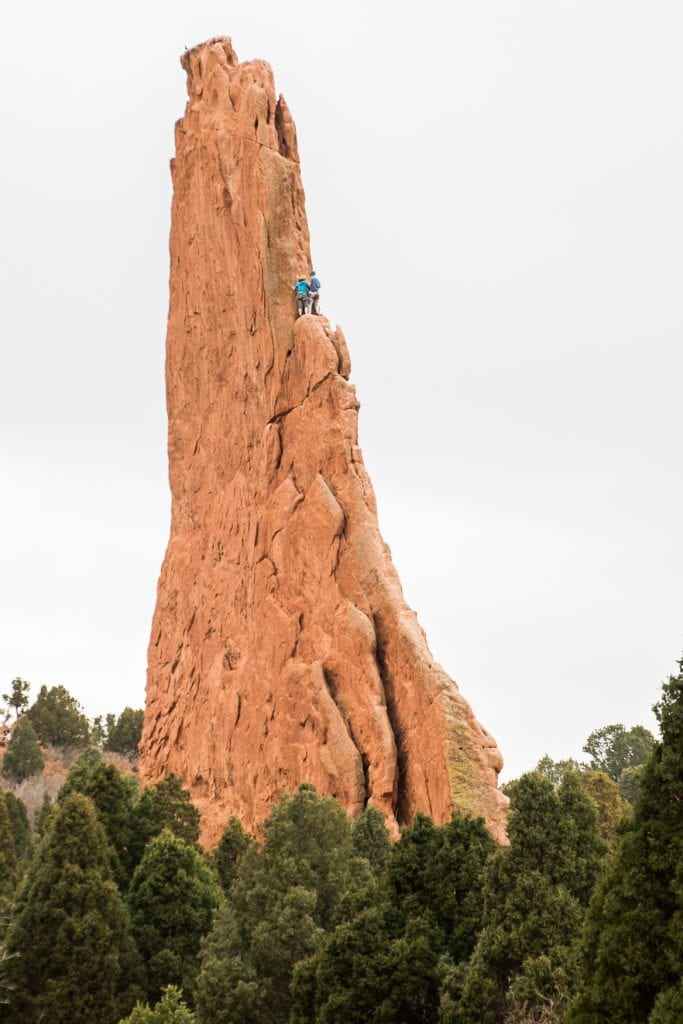 Climbing the Lofty Spire of Hope
Climbing the Lofty Spire of HopeWhy the Founder of Hope Has Arrived celebrated his first cancerversary from incurable cancer by climbing a sheer rock spire.
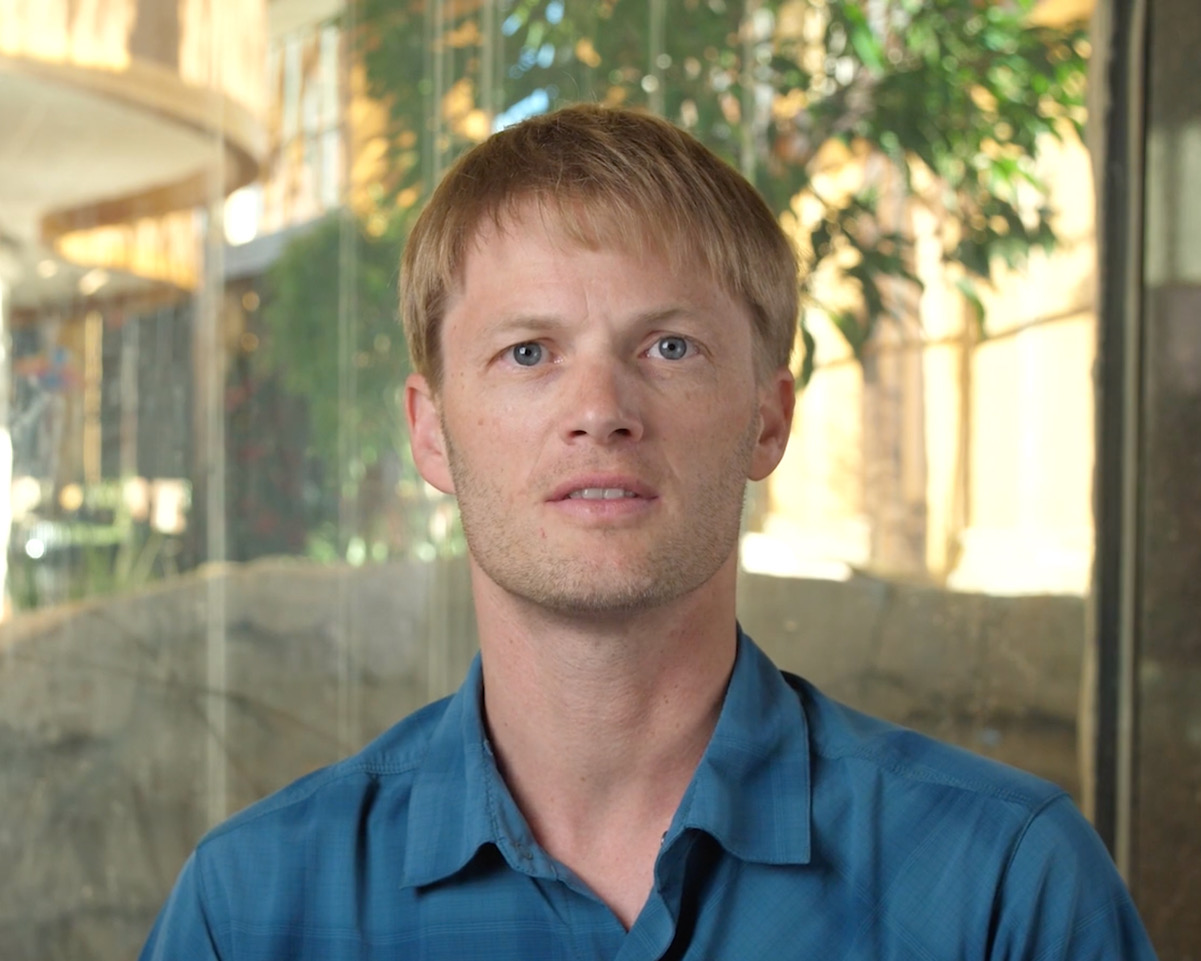
Chris Lawrence
(Founder of Hope Has Arrived)
As I climbed the vertical rock spire, clinging to small sandstone holds, I wondered if this precarious ascent was the best choice to celebrate my first cancerversary from incurable cancer.
After all my body has been through, should I still risk this? I wondered.
My wife and I sought to complete this rock climb to celebrate the one year anniversary of my diagnosis with bile duct cancer.
Yet the outing would be exactly what my wife and I wanted: gritty, edgy and hopeful—three words that have proved very fitting for my cancer journey.
The climb
This climb, called Montezuma’s Tower, is an extremely exposed narrow 15-foot tower in Garden of the Gods State Park in Colorado. You feel as though you could easily slip off the side and either hit the deck or at least swing like Tarzan.
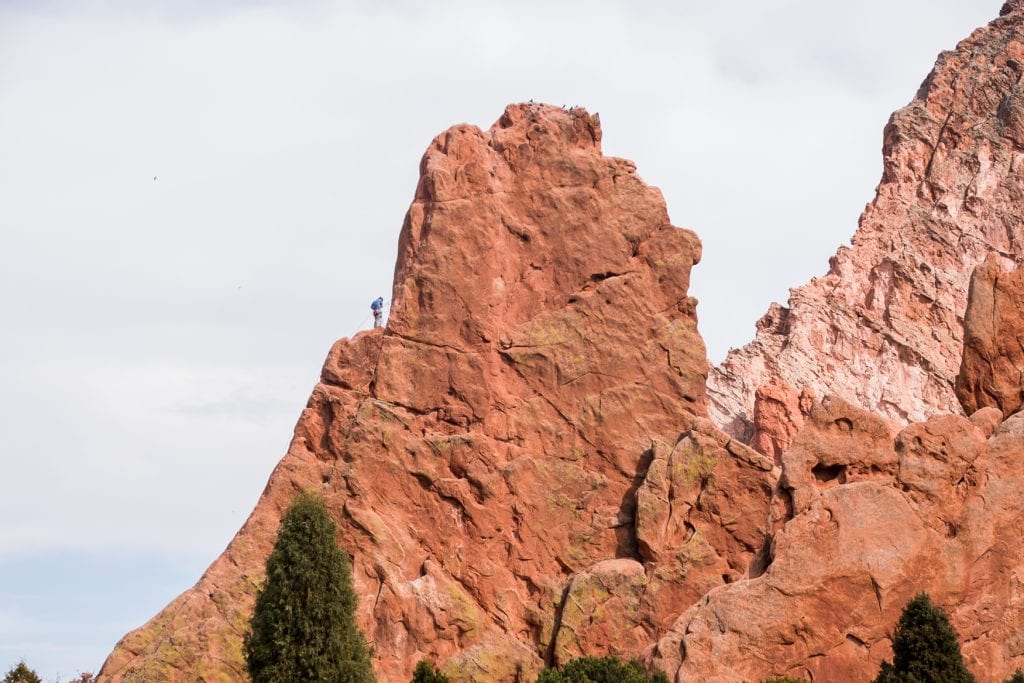
One of my legs started to shake as I pulled up to one of the harder parts of the climb, about 20 feet off the ground. I needed to get past this section so I could keep myself safe, but my trembling leg wasn’t helping.
My cancer journey
I was first diagnosed with stage IV bile duct cancer, which is considered an incurable cancer, in March of 2016. I was only 37 years old, a husband and new father, and although I was a very healthy and athletic person, I suddenly faced a diagnosis with a 1.5-year life expectancy.
Yet here I stood a year later, battered but not beaten, choosing to climb.
My scans started showing clear after roughly three months of treatment, but that did not mean I was out of the woods yet. I was paying a steep price for the radiation and endless rounds of chemotherapy and was still in treatment.
I soon became a weakened shell of my former self, shedding at least 15 pounds. I felt tired all the time and experienced numbness in parts of my hands and feet, due to neuropathy.
Yet I wanted to climb the sheer tower a year after it all began. I had asked Elizabeth to be my wife on top several years ago. Over the years, we climbed it a few more times, but this day felt especially significant.
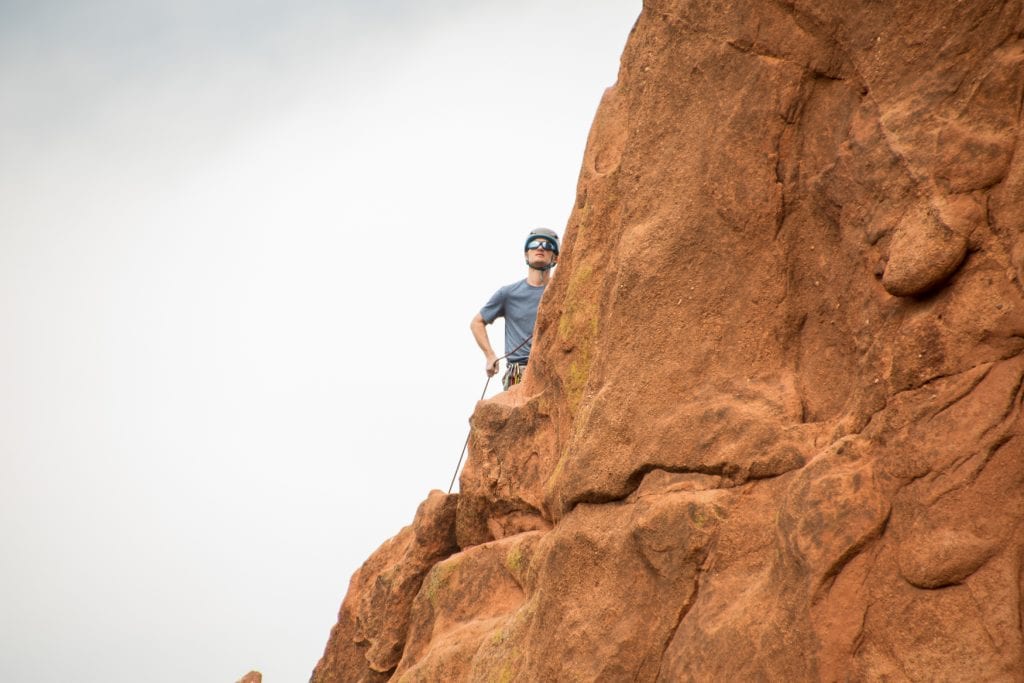
Why I climbed the spire
Looking back, I chose to climb the tower because I wanted to prove to myself I could still do it. I wanted to show, that though cancer had taken so much of my life, I was still standing—I still clung to who I am, my love for adventure and that I was still the same person I was before cancer.
I also climbed it to encourage other cancer survivors, who could relate to the path I had been walking.
This climb proved a statement, one of hope.
My wife and I chose to live in hope. Though cancer had certainly tested my hope, it could not take it away completely.
I find my biggest source of hope through my relationship with God. I love these words from Psalm 77:14 “As for me I will always have hope.”
For several months, my wife and I had been desperately clinging to this hope, much like the gritty sandstone rock face.
Before cancer, I thought I knew what hope was, but mine had never been tested like this. Incurable cancer proved a daunting journey. Yet I believed that there was hope, because of the goodness of God and also the advancements in cancer treatment.
My medical hope
A month after my diagnosis, a series of events led me to meet with a research doctor. He said something no one else had: “I know how to treat this.”
Because of his words, though seemingly unbelievable at first, my hope began to grow. I wondered if maybe my diagnosis wouldn’t unfold they way everyone said it would.
My wife and I chose to hope and and wait for a good outcome, however risky that might prove.
Inspiration from a tough experience
Climbing up the knobby face that day, our path felt precarious, capable of my feet slipping off one side or the other, kind of like my cancer journey.
In the depths of my experience, I wrote a series of articles about searching for hope against cancer called The Pathway to Hope.
I also wrote Fighting the Fear of Cancer and also 10 Tips for Facing Your Next Scan, as I white-knuckled my way through every scan, doctor appointment, and mystery pain that cropped up in my body that I thought could be a recurrence. Fear constantly lurked in my mind, bringing dark and unsettling thoughts, like leaving my wife and daughter behind in the world.
Living not dying
Climbing in March that day, I wasn’t thinking about death. I was thinking about living. After 20 minutes or so, I reached the halfway point of the climb, which eases in difficulty onto a shelf, but I still feels exposed. I built an anchor, clipped myself in and began pulling the rope up. I set the belay and then yelled, “OK, Elizabeth, you are on belay.”
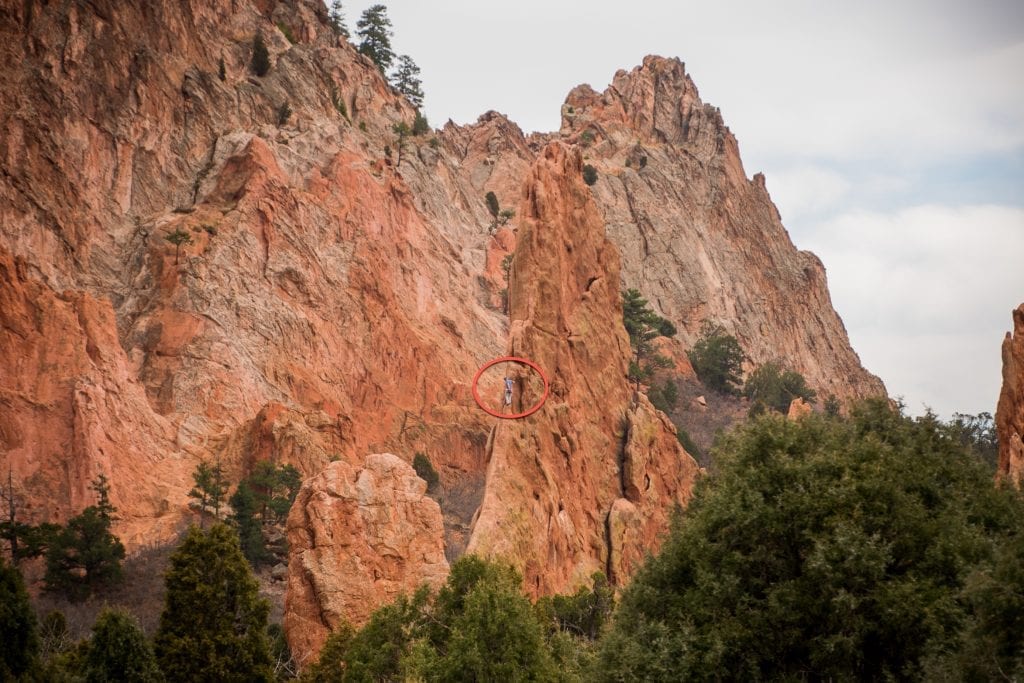
As I waited for her to climb, I couldn’t help thinking how fitting it was that we were tied together with a rope, relying on each other to get through this dangerous territory.
It was a fitting analogy for what it had been like to walk through incurable cancer together.
We had certainly faced our share of hostile territory and challenges, but just like the climb, we were in it together—committed to each other, committed to whatever story was being written.
After she climbed up to me, we talked about how happy we were to be living this moment.
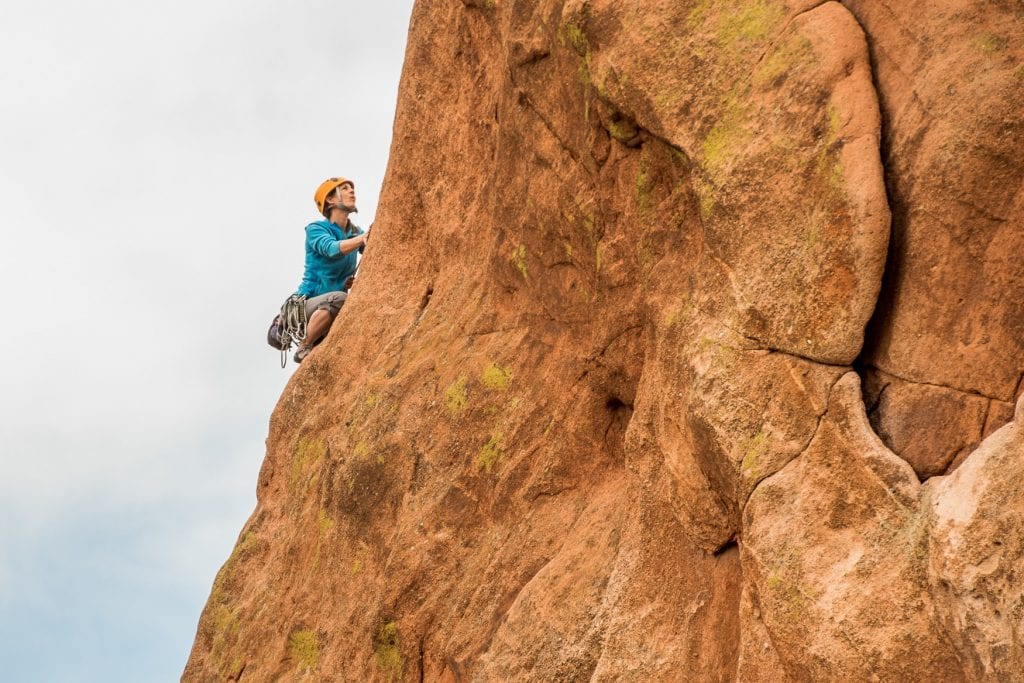
Reaching the Top
After Elizabeth reached me and we reset the belay, I started climbing the final part, I felt more confident, yet still knowing I needed to focus.
This final pitch was like getting a few good scans under our belt, breathing a sigh of relief and feeling hope increase, still knowing obstacles wait up ahead, and this journey could take a different turn at any moment.
The rest of the climb went well, too, and thankfully, we soon stood on top, unscathed.
Looking back over the route we had just ascended, the surrounding tan sandstone and tourists swarming like ants below us in the park, we felt intense gratitude, thankful that we could do this climb, thankful for the hope we had.
That day in March proved a landmark moment for many reasons, but especially as a tangible expression of how significantly God improved my health from incurable cancer, bringing me to a much better place than few doctors would have said is possible.
Surprise documentation of the climb
Unbeknownst to us, a professional photographer documented our climb and left a business card on our backpacks.
We did not stage or plan a photo shoot! Of all of the many times my wife and I have climbed together, this is the only time this has happened.
“Hollywood couldn’t write a better script of your story and what God has done,” my dad said after I told him about our climb and the photos.
My dad, who serves on the advisory board for Hope Has Arrived, later wrote the following stanza, inspired by photos. I think it perfectly captured the moment and how Avera, the medical center where I was treated, helped me.
“Together we climb the lofty spire of hope,
to rediscover life itself, wrought by God through
the steely determination of the people of Avera.”
My wife and I are so grateful the excellent medical care at Avera.
We also praise God for all he has done for us. He has been our reason for hope.
Wishing for more cancerversaries
This year I passed my 5-year cancerversary of incurable cancer. Over the months and years, my health has continued to improve and I’ve done plenty more rock climbing. I am so grateful.
And while I don’t know what the future holds for me (nobody does, cancer or not), I will continue to live in hope.
Regardless, climbing Montezuma’s Tower proved a fitting way to celebrate my first cancerversary.
Because of this experience, I like to borrow my dad’s words and now think of it as, “The Lofty Spire of Hope.”
If you need help finding hope on your cancer journey, check out The Pathway to Hope.
You can also learn more about Celebrating Your Cancerversary.
Need courage to face your next scan? click here
to download our free guide.
Related posts:
